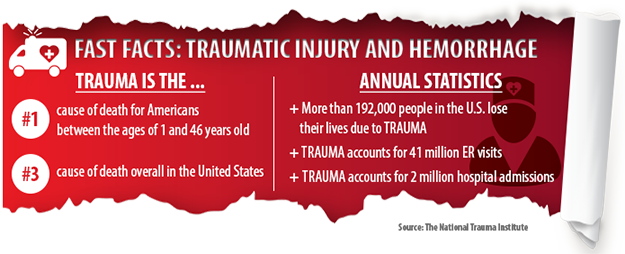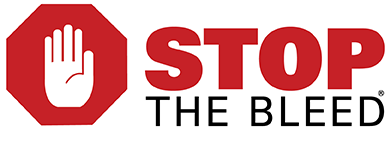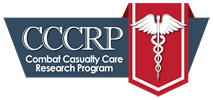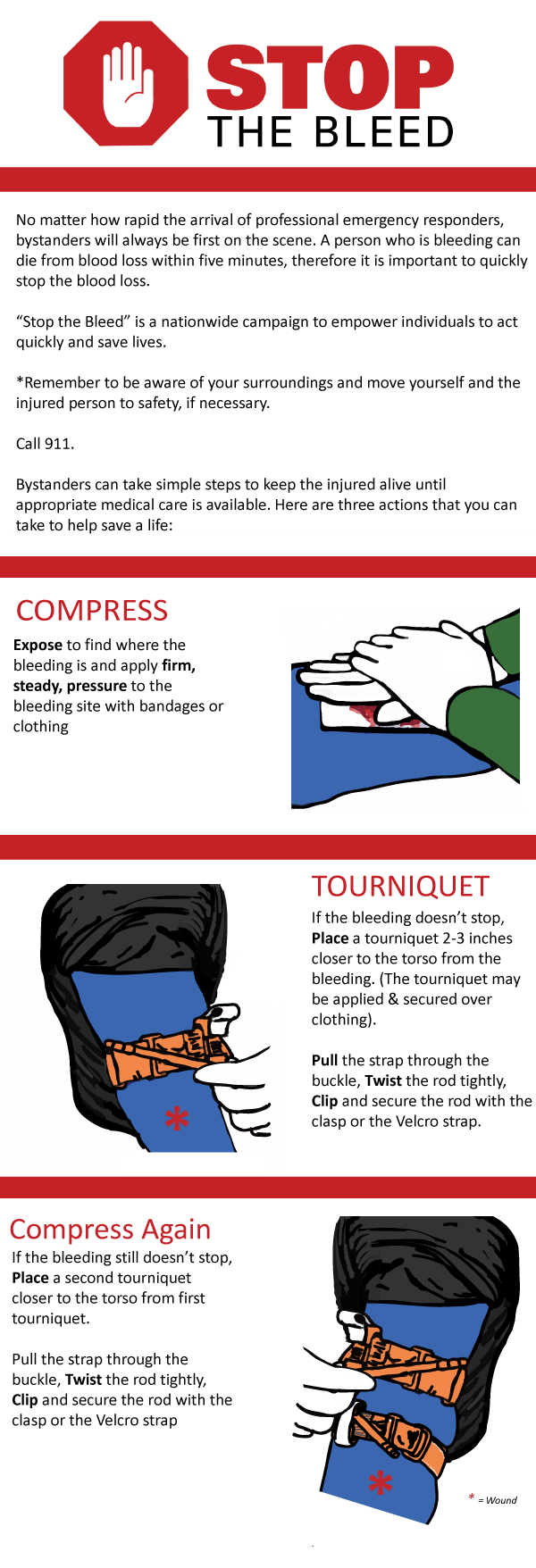Stop the Bleed
Overview
Everybody has the capacity to help somebody. That singular concept is the launch point for the "Stop the Bleed campaign", a joint effort between the White House, the National Security Council, and the Department of Defense designed to raise public awareness and resiliency with regards to situations of mass civilian trauma. Specifically, the campaign seeks to increase the public's understanding of its own capacity to respond to matters of trauma and render life-saving aid.
In the past few years alone, Americans have witnessed a series of mass trauma and casualty situations within their own borders, from the 2012 Connecticut school shootings to the 2013 Boston Marathon bombing to the 2015 Amtrak derailment near Philadelphia, PA. Each one of these incidents, regardless of cause, underscores the need for broad public awareness of how, exactly, to respond in such situations. Simply understanding that an event might happen is not enough. Now, all Americans must understand how to react in such situations, and furthermore, how to help their fellow Americans in such drastic and acute situations.
This is where the "Stop the Bleed" campaign steps forward. By explaining in simple terms how anyone and everyone can save a life in a mass trauma situation, the federal government hopes to build resiliency among the American public and increase the chances of survival in the wake of such tragedies. Given that trauma is the number three overall cause of death in the United States and accounts for more than 190,000 deaths per year, the ultimate goal of this effort is to improve public safety and save lives.

"Stop the Bleed" isn't simply the slogan of this campaign, it is the goal of this campaign. When a mass casualty situation occurs, civilian bystanders are encouraged to stop hemorrhagic bleeding among victims by exerting pressure on the wounded area. Almost anything can help stem the tide of hemorrhagic bleeding; a tourniquet, a belt, or even your hand. Our "Stop the Bleed" logo, therefore, serves as both a reminder as well as a symbol – and goes even further towards underlining our ultimate message: everybody has the capacity to help somebody.


